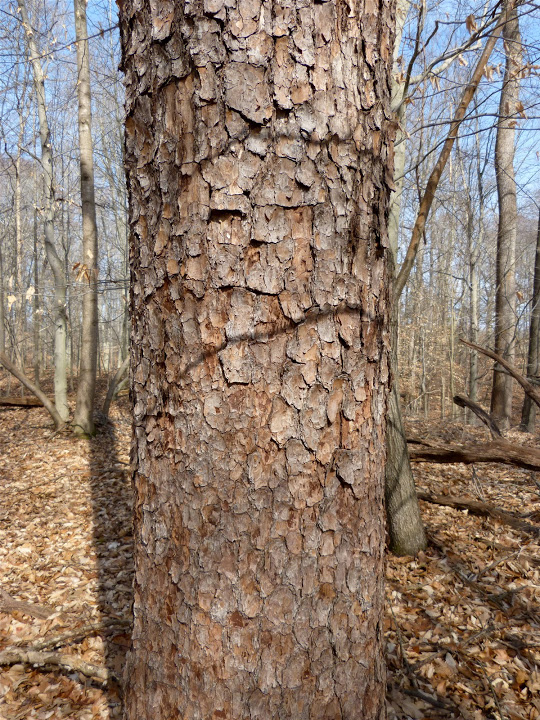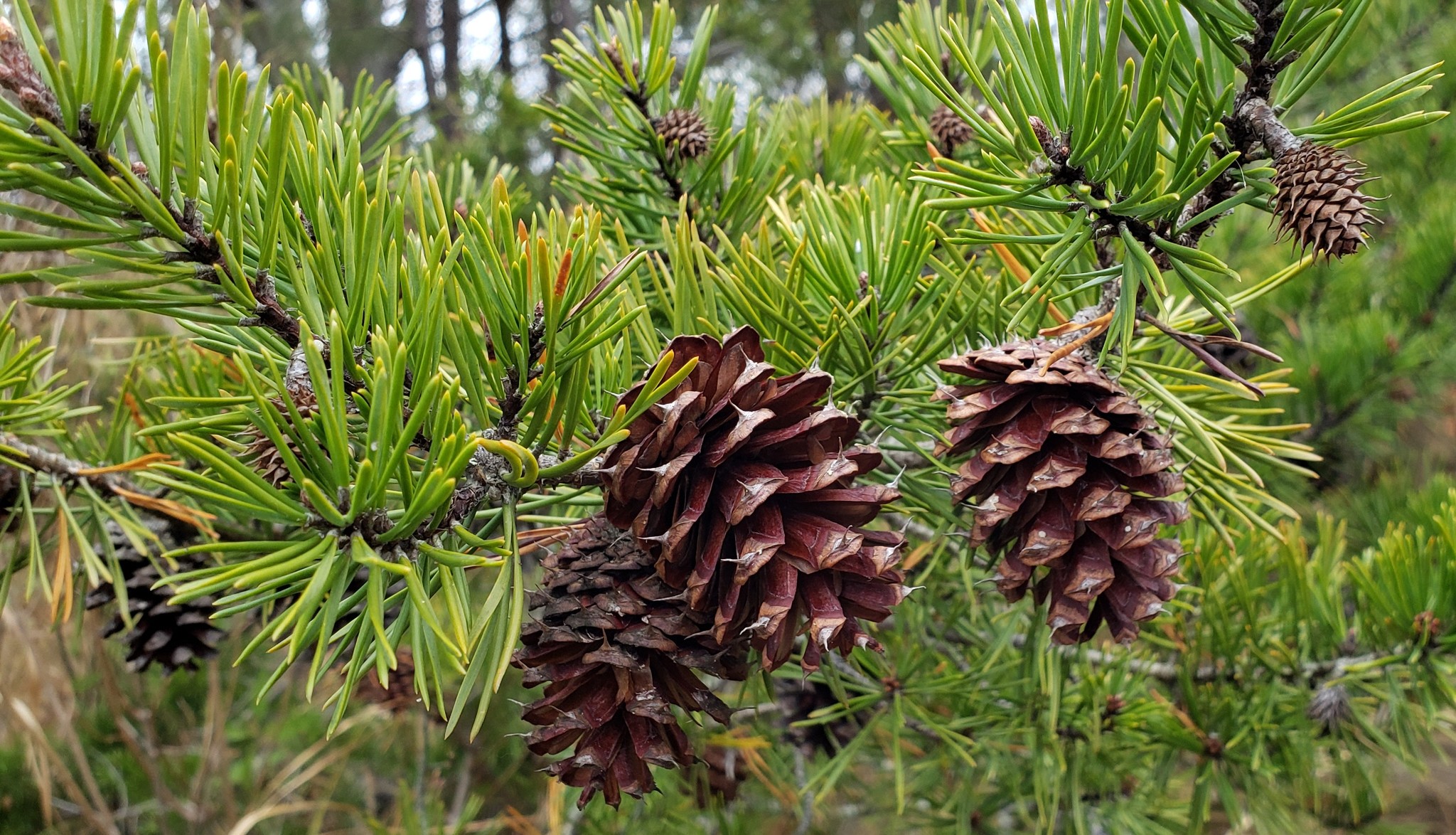Virginia Pine
Pinus virginiana Mill.
Description
Virginia pine is a gymnosperm tree in the pine family (Panaceae). It is an evergreen with leaves that function and stay green through multiple growing seasons. Virginia pines are relatively small trees, with heights ranging from 15-40 ft. tall and diameters between 8-14 inches². Young Virginia pines grow in a triangular shape, with broad branches at the bottom that get narrower towards the top of the tree. Older Virginia pines tend to have the majority of their branches concentrated near the top. These limbs are usually very long, growing somewhat spread out from each other, and jutting out in random directions. It is a relatively short-lived tree with a life expectancy of 60 to 90 years ¹. The bark is orange-brown when young and has thin scales when mature ². The needles are usually short, around 1.5 to 3 inches long, twisted, and come in groups of two. The cones of the Virginia pine tend to be dark brown at maturity and has a sharp prickle ². Cones are produced in groups of 1-4 and can be up to 3 in. long. They tend to be fairly sharp and stay on the tree for 3-8 years, sometimes more ².
Scaly bark of Virginia pine. J. Brighton, Maryland Biodiversity Project 5

Female cones and needles in clusters of two. M. Beziat, Maryland Biodiversity Project 5
Distribution
Virginia pine is found along the coastal plain in New Jersey and in the Piedmont southwest to Alabama and Virginia. It grows at lower elevations of the Appalachian mountains 6. It grows in crowded forests often in pure stands on eroded and poor soils where many other plants have trouble thriving ². This is due to its ability to adapt to most soil conditions ³. It prefers areas with full sun ³. It lives in humid climates with 35-55 inches of annual rainfall 6. In Maryland it can be found throughout the state except in Garrett County 5.

Native distribution of Virginia pine ¹
Wildlife Importance
Virginia pines are high producers of browse, which is consumed by many of the local fauna, especially white-tailed deer 7. The seeds of Virginia pine trees are also a good food source for many mammals and birds 7. Virginia pines are good nesting trees for birds like pileated woodpeckers because of the softened wood in older pines 7. Young Virginia pines are can be a good habitat for rabbits, and nongame birds 7.
Economic Importance
Virginia pine wood was originally used for lumber, fuel, and many more purposes, however in recent years it is mainly used in pulpwood 7. It is also used for the reforestation of abandoned mine sites because of its ability to adapt to difficult soil conditions 7. In many states the Virginia pine, after a little pruning, is used for Christmas trees, and can also be used for other Christmas decorations ².
Threats
The Virginia pine is susceptible to a few common diseases of pine, but is generally trouble free 4. Older Virginia pines may suffer from heart rot 7. Another common disease is pitch canker 6. Occasionally, stem cankers, eastern gall rust, stem rust, root rot, and butt rots may be present in Virginia pines 6. Many small insects and rodents may also damage the trees. Virginia pines notoriously thin bark can make them very vulnerable to fire 6. Because of their shallow rooting Virginia pines are very susceptible to damage from wind 6. Virginia pins is more susceptible to ozone than most pines 6.
Interesting Facts
- Virginia pine is sometimes nicknamed “scrub pine” ².
- Maryland has a champion Virginia pine located in Middle River, it stands at 116 feet with a circumference of 94 inches 8.
References
- American Conifer Society, Conifer Database: Pinus virginiana
- North Carolina State Extension: Pinus virginiana
- University of Kentucky College of Agriculture, Food and Environment: Virginia pine
- Ohio Department of Natural Resources: Virginia pine
- Maryland Biodiversity Project: Virginia pine
- USDA Forest Service Silvics, Vol. 1 Conifers: Pinus virginiana
- USDA Forest Service Fires Effects Information System: Pinus virginiana
- Maryland State Champion Trees
Contributed by L. Mellinger
